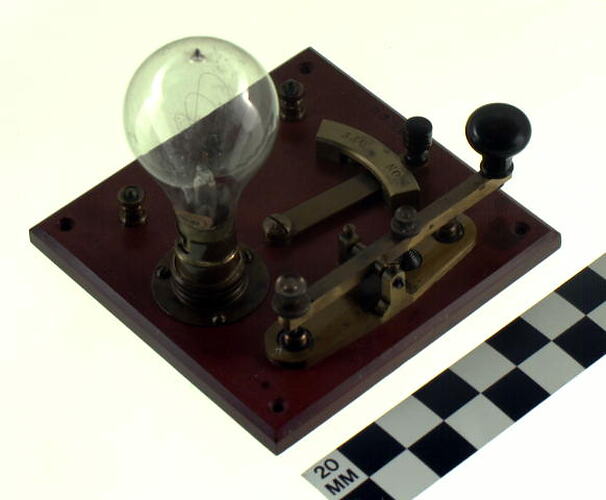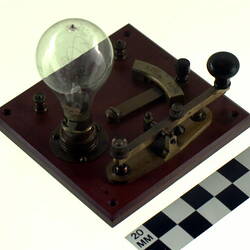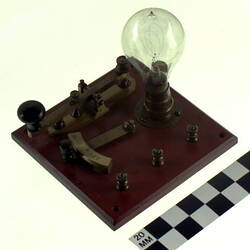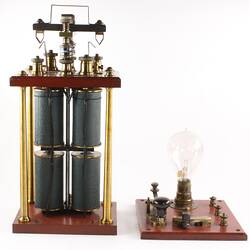Summary
High voltage keying apparatus with morse key and keying relay.
The keying relay (ST 15476.1) works in combination with a morse key (ST 15476.2) to switch the power on and off to a spark transmitter. It is used to isolate the morse key from the high voltages and current involved in driving the spark transmitter. The wide gaps of the relay are sufficient to break the high voltages.
When the morse key is in its open position, the rear contacts connect to the top coils of the relay via the globe. When the key is pressed, the bottom coils are actuated pulling the contacts closed.
Designed in 1913 by John Graeme Balsillie, at the time, a wireless adviser to Commonwealth Government. The instrument was used at Commonwealth land stations.
Physical Description
Relay consists of four coils mounted between two plates; two on a base plate. Four brass pillars on base support a top plate carrying two pairs of sliding contacts and two pairs of butting contacts. The two upper coils are mounted on the underneath of the top plate. Morse key, brass, on brown wooden base, also carrying a swich, a bayonet contact fitted with a carbon filament lamp and three terminals.
More Information
-
Collecting Areas
-
Acquisition Information
Donation from Wireless Branch, Australia: Post Master General's Department (PMG), 02 Mar 1925
-
Manufacturer
Shaw Wireless Works, Randwick, Greater Sydney, New South Wales, Australia, circa 1913
-
Inscriptions
Relay: On each of the top coils: D On each of the bottom coils: E On the contact bridging straps: L M Morse key: Switch: ON OFF Lamp bulb: (GE logo) Paper label on bulb: 16 c / EDISON / 220
-
Classification
-
Category
-
Discipline
-
Type of item
-
Exhibition Collection Management
160 mm (Length), 160 mm (Width), 145 mm (Height)
-
Keywords
Morse Keys, Radio Transmitting Equipment, Telegraph Equipment



